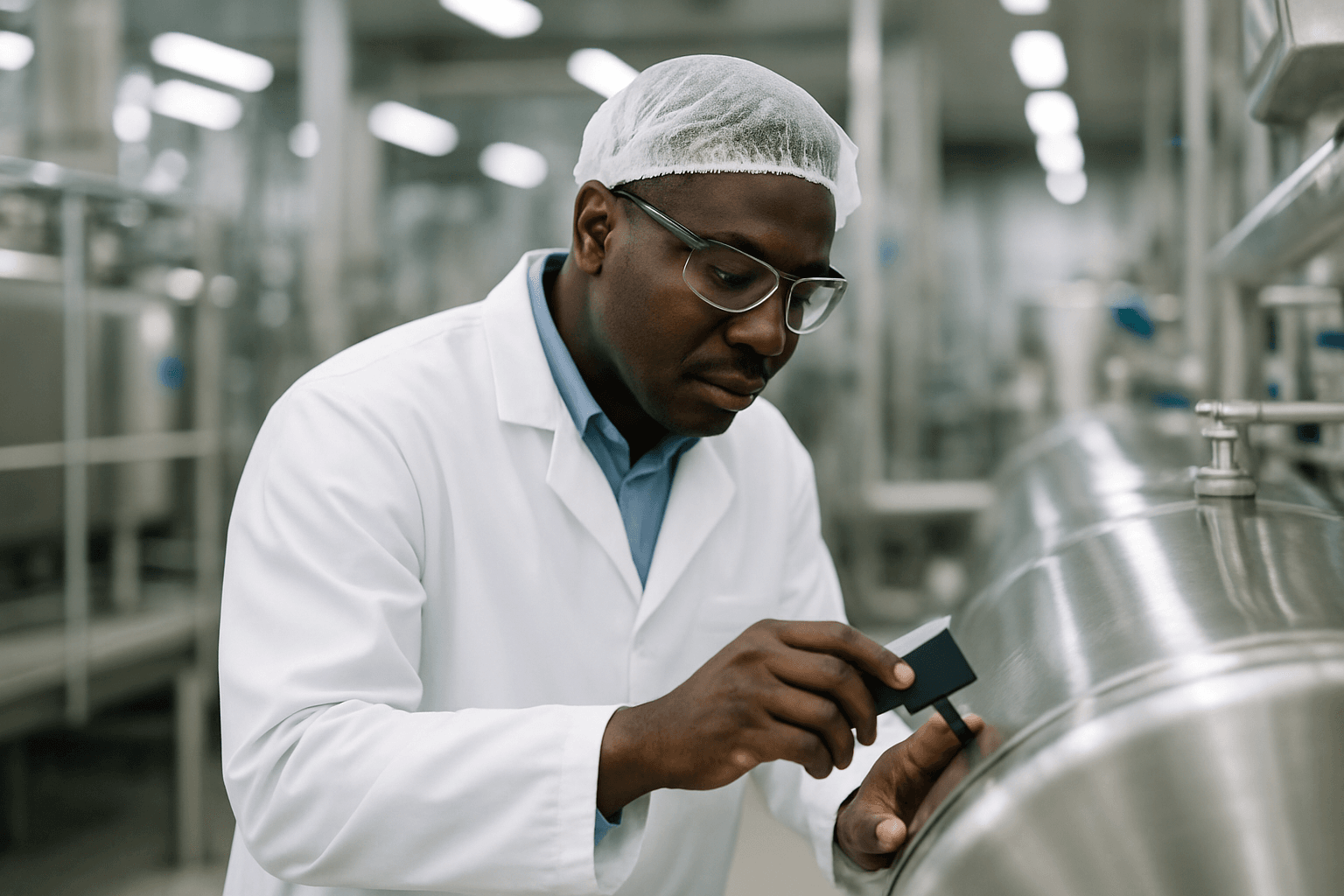In the intricate world of food processing, maintaining impeccable hygiene is not merely a best practice; it’s a non-negotiable cornerstone of food safety, public health, and brand reputation. Inadequate cleaning and sanitation can lead to microbial contamination, allergen cross-contact, product spoilage, and costly recalls. Yet, cleaning protocols are often developed through trial-and-error, lacking the rigorous, data-driven optimization needed for true effectiveness and efficiency. This is where Design of Experiments (DOE), a powerful statistical engineering methodology, offers a transformative approach to achieving robust and consistently effective cleaning and sanitation in food processing plants.
What is Design of Experiments (DOE)?
Design of Experiments (DOE) is a systematic method for determining the relationship between factors affecting a process and its output. It involves planning, conducting, analyzing, and interpreting controlled tests to evaluate the influence of multiple input variables (factors) on one or more output responses. Unlike traditional one-factor-at-a-time experimentation, DOE allows for the simultaneous study of multiple factors and their interactions, providing a more comprehensive understanding of complex processes with fewer experiments. This makes it an invaluable tool for process optimization and robust design in various industrial manufacturing settings.
Why DOE is Critical for Food Processing Sanitation
The application of DOE in food processing sanitation addresses several critical challenges, moving beyond reactive cleaning to proactive, optimized hygiene.
Ensuring Food Safety and Regulatory Compliance
Food processing facilities operate under stringent regulatory requirements aimed at preventing foodborne illnesses and contamination. Cleaning and sanitizing are essential prerequisite programs for food safety, especially within Hazard Analysis and Critical Control Points (HACCP) plans. DOE provides scientific evidence that cleaning processes are capable of consistently delivering clean equipment, a key aspect of cleaning validation required by regulatory bodies like the FDA, WHO, and EMA. By identifying the most effective combination of cleaning parameters, DOE helps minimize biological hazards (like pathogens and biofilms), chemical hazards (residues from cleaning agents), and allergen cross-contact, directly supporting product safety.
Improving Operational Efficiency and Reducing Costs
Cleaning and sanitation are significant operational costs, involving labor, water, energy, and chemicals, often contributing to production downtime. Suboptimal protocols can lead to excessive use of resources or require re-cleaning, increasing expenses. DOE helps to identify the optimal balance of factors to achieve desired cleanliness levels with the minimum necessary resources. This translates to reduced utility consumption, chemical waste, and equipment turnaround times, ultimately boosting overall plant efficiency and reducing operational costs.
Achieving Robust and Consistent Cleaning
Variability in cleaning outcomes can arise from fluctuations in process parameters, personnel, or environmental conditions. A cleaning cycle is considered “robust” if it can consistently meet performance requirements even under varied operating conditions. DOE, particularly robust design principles within statistical engineering, enables the development of cleaning protocols that are less sensitive to these unavoidable variations, ensuring consistent and predictable cleaning success every time.
Key Factors in Cleaning and Sanitation Protocols (DOE Inputs)
Effective cleaning and sanitizing protocols involve a complex interplay of several factors. DOE systematically investigates these to determine their individual and combined impact on cleaning efficacy. Key factors typically include:
- Chemical Concentration and Type: The choice and concentration of detergents (e.g., alkaline for fatty soils, acidic for mineral salts) and sanitizers are crucial. Improper use can “set” soils or reduce effectiveness. DOE helps optimize the concentration for maximum effect with minimal chemical usage.
- Temperature: Higher temperatures generally aid chemical productivity and decrease soil viscosity, facilitating removal. However, excessively high temperatures can increase operating costs or damage certain surfaces. DOE helps find the optimal temperature range.
- Contact Time: The duration cleaning agents or sanitizers are in contact with surfaces significantly impacts their effectiveness. Longer times can improve cleaning but risk surface damage. DOE can optimize exposure time for desired results.
- Mechanical Action: This refers to the physical force applied, such as flow rate, pressure, impingement, scrubbing, brushing, or agitation, particularly important in Clean-in-Place (CIP) systems. Mechanical action helps break up soils and enhances cleaning efficiency.
- Water Quality: Water comprises 95-99% of cleaning solutions, and its impurities, especially hardness, can drastically alter detergent and sanitizer effectiveness. DOE can assess the impact of water quality and identify needs for buffering agents or pre-treatment.
- Soil Type and Biofilms: The nature of the food soil (e.g., proteins, fats, carbohydrates, mineral salts) dictates the type of cleaner required. Biofilms, which are communities of microorganisms, present a particularly challenging soil type requiring sophisticated cleaning agents and methods. DOE can be tailored to address specific soil challenges.
Measuring Cleaning Effectiveness (DOE Responses/Outputs)
To optimize cleaning protocols using DOE, measurable responses are essential to quantify the effectiveness of different factor combinations. These typically include:
- Visual Inspection: A fundamental initial check, though subjective, for gross soil and residues. Good lighting is critical.
- ATP Testing (Adenosine Triphosphate): A rapid, objective method to measure organic residues, indicating the presence of biological matter. ATP monitoring helps verify cleaning effectiveness.
- Microbiological Swabs: Direct sampling of surfaces to detect and quantify microorganisms, providing a critical measure of sanitation efficacy.
- Allergen Testing: Swabbing surfaces for specific allergen residues, crucial in facilities processing multiple products with allergen concerns.
- Chemical Residue Analysis: Testing for residual cleaning agents or sanitizers to prevent chemical contamination of food products.
- Turbidity, Conductivity, pH, Flow, and Temperature Monitoring: In CIP systems, these sensor measurements indicate whether cleaning is performed uniformly over time, though they may not directly show biofilm formation.
Implementing DOE for Protocol Optimization
A structured approach to applying DOE ensures comprehensive and reliable results:
- Define Objectives and Scope: Clearly articulate what needs to be optimized (e.g., reduce cleaning time, improve microbial reduction, minimize chemical usage) and the specific equipment or process line.
- Identify Factors and Responses: Based on process knowledge and preliminary investigations, select the critical input factors and measurable output responses. For example, factors could be detergent concentration, temperature, and contact time, with responses being ATP levels and microbial counts.
- Select Experimental Design: Choose an appropriate DOE design (e.g., full factorial, fractional factorial, response surface methodology) based on the number of factors, desired interaction insights, and available resources. Factorial designs are excellent for identifying significant factors and interactions.
- Execute Experiments: Systematically run the planned experiments, carefully controlling the factors and meticulously collecting data on the responses. This often involves performing cleaning validation trials, ideally in triplicate, to establish proper parameters.
- Analyze Data and Interpret Results: Use statistical software to analyze the experimental data. Identify which factors and interactions significantly impact the cleaning responses. This analysis helps understand the cause-and-effect relationships.
- Validate and Implement Optimized Protocols: Once optimal settings are identified, validate the new protocols under real-world conditions to confirm their effectiveness and robustness. Document the validated procedures in Standard Operating Procedures (SOPs) and ensure proper training of personnel.
Integrating DOE with Broader Quality Systems
DOE doesn’t operate in a vacuum; its effectiveness is amplified when integrated with existing quality management systems:
- HACCP and Preventive Controls: Cleaning and sanitation are critical preventive controls within HACCP plans. DOE helps validate these controls by providing data-driven evidence of their efficacy against identified food safety risks.
- Statistical Process Control (SPC): SPC involves real-time monitoring of processes to detect and correct problems before they escalate. Once optimized protocols are implemented via DOE, SPC can be used to continuously monitor key cleaning parameters (e.g., chemical concentration, temperature, flow rates) to ensure they remain within control limits, maintaining process stability and preventing variations.
- Cleaning Validation and Verification: DOE is an integral part of the “design and development” stage of a robust cleaning validation process. After optimization, ongoing verification (e.g., daily visual checks, ATP swabbing, microbial testing) ensures the validated procedures remain effective.
- Hygienic Design: The cleanability of equipment heavily depends on its hygienic design. DOE can also inform or refine cleaning protocols for existing equipment, and insights gained can contribute to better hygienic design principles for future installations.
Benefits of a DOE-Driven Approach
Adopting Design of Experiments for cleaning and sanitation optimization in food processing plants yields numerous benefits:
- Enhanced Food Safety: Significantly reduces the risk of microbiological, chemical, and allergen contamination.
- Regulatory Compliance: Provides documented, scientific evidence for cleaning validation and regulatory adherence.
- Cost Savings: Optimizes resource consumption (water, energy, chemicals) and minimizes product loss and rework.
- Increased Efficiency: Reduces cleaning cycles and downtime, improving overall production throughput.
- Consistent Quality: Develops robust protocols that deliver repeatable and predictable cleaning outcomes.
- Problem Solving: Pinpoints root causes of cleaning failures and guides effective corrective actions.
- Innovation: Facilitates the efficient evaluation of new cleaning agents or technologies.
Conclusion
The complexity of food processing environments demands a sophisticated approach to cleaning and sanitation. Design of Experiments offers a systematic, data-driven methodology to move beyond guesswork, enabling food processing plants to scientifically optimize their hygiene protocols. By understanding the critical factors influencing cleaning effectiveness and leveraging statistical analysis, companies can achieve unparalleled levels of food safety, operational efficiency, and regulatory compliance. Integrating DOE with robust quality systems like HACCP and SPC creates a powerful framework for continuous improvement, ensuring that food products are consistently safe and of the highest quality for consumers worldwide.

